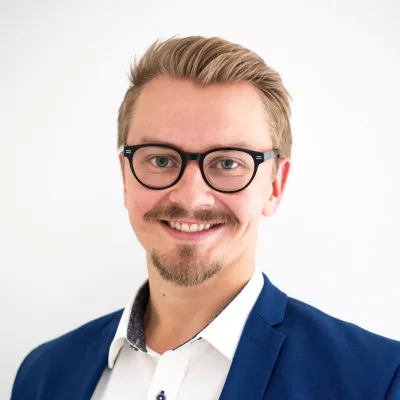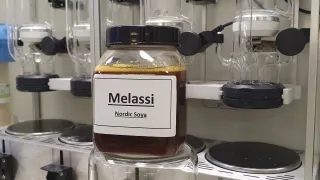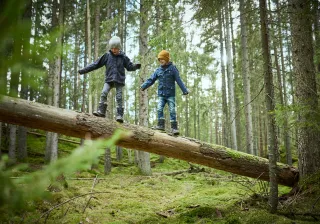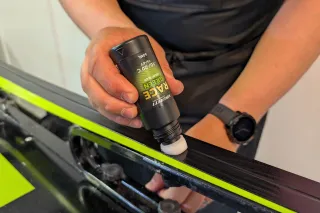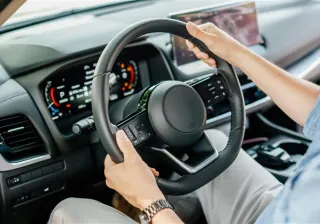Finnfoam, Brightplus, Nordic Soya and VTT have jointly developed technology that can be used to manufacture multipurpose bioplastic from soy molasses. VTT's expertise in synthetic biology, the modification of microbes and optimisation of bioprocesses was utilised in the development work. Now a pilot plant is being planned in Uusikaupunki to produce bioplastic for the first time in the world.
Raw materials that can be used for food are no longer needed for the production of bioplastic. In a joint project between Finnfoam, Brightplus and VTT, plastic materials are produced from soy molasses, a by-product of soy feed, for the first time in the world.
The molasses comes from Nordic Soya, which has the largest and most modern multi-stage soy processing plant in the EU in Uusikaupunki. For this reason, the bioplastic pilot plant will be built in Uusikaupunki, as the raw material for the plastic will come through a pipeline from the soy processing plant.
In the manufacture of animal feed, the syrup-like molasses, which is harmful to animal digestion, is extracted from soy meal. It is then currently burned for energy.
- The aim here is to increase the added value of a residual material, so that it is also in line with sustainable development. Our mission at VTT is to help create sustainable growth, well-being and jobs in society, says Tiina Nakari-Setälä, Vice President, Strategy and Business Intelligence at VTT.
Replacing oil-based plastic
This new raw material can be used to replace oil-based plastics. Finnfoam CEO Henri Nieminen considers it important that thanks to the new technology, this can be done without taking away arable land from food production.
- From the point of view of sustainable development, it is not sensible to fell forests in order to have enough arable land for biomaterials. We should rather make full use of the current arable land area, he says.
According to Henri Nieminen, the best way to use land is to cultivate soy, which produces the most protein per area. Products made from soy-based bioplastic can be used to bind carbon dioxide from the atmosphere for a long time; for example, through building insulation and packaging materials manufactured by Finnfoam.
More than 300 million tonnes of soybean is currently cultivated in the world per year. According to Henri Nieminen, more than 20 million tonnes of bioplastic could be produced from ingredients from the soy harvest that are unsuitable for food. The amount can be compared to that of polystyrene, for example, which Finnfoam also uses in its insulation. The global use of polystyrene is about 11 million tonnes a year.
Four years of development
Both Finnfoam and Nordic Soya are companies owned by the Nieminen family. Finnfoam is one of the leading manufacturers of plastic-based thermal insulation around the Baltic Sea. The company also makes packaging products. According to Henri Nieminen, the acquisition of a soy plant in the same ownership led to further consideration of how waste material produced as a by-product of soy protein could be utilised.
- Side streams can be someone’s raw material. When the volumes are big, it is worth investigating how they could be utilised.
About five years ago, Henri Nieminen contacted VTT, which has world-class expertise in industrial biotechnology and biotechnology production processes. The actual project began in 2017 when Business Finland had granted funding for the development project.
- VTT has had the role of a technology developer in the project, Tiina Nakari-Setälä says.
She compares the production of bio-based plastic to the production of beer, for example, in which nutrients are placed in a large tank, where yeast processes their sugars into ethanol.
- To put it very simply, this is about a similar type of fermentation. You put soy molasses in a large tank, where yeast can produce lactic acid out of the sugars in the molasses. Polylactic acid, or PLA, comes out of the bioplastic plant in the form of beans or granules that can be transported for further processing.
According to Tiina Nakari-Setälä, VTT has developed the bioprocess for production of lactic acid.
- By modifying the yeast strain, it has been possible to optimise the use of raw materials and reduce the amount of by-products, she explains.
From the beginning, the project has been coordinated by Brightplus, which has had a decisive role in the polymerisation of lactic acid into long chains, i.e. bioplastic compounds.
- We are a pilot platform and product developer that quickly supplies materials to our partners for testing in their own products, says Jarkko Leivo, founding owner and Technology Director of Brightplus.

Next step: pilot phase
According to Jarkko Leivo, the polymers produced in the process can be modified for different applications. As the project moves on to the pilot phase, new partners will be sought. Henri Nieminen confirms that there could be other users for the pilot plant besides Finnfoam.
- Our aim is to find partners who are also interested in making biomaterials. The goal is to have a very diverse pilot plant for different biomaterials, including bio-oils.
VTT has developed the fermentation of soy molasses from a laboratory scale to a scale of over one cubic metre. Before actual factory production starts, according to Henri Nieminen, a pilot plant is needed, which is to be built during 2021 or 2022. He estimates that it will cost just over EUR 5 million.
- The largest fermenter at VTT is one and a half cubic metres. The pilot plant would be about ten times that. Piloting is an important stage in optimising the process, says Henri Nieminen.
He hopes that the full-scale bioplastic plant will be commissioned in 2023. The production volume will then be at least one hundred times that of the pilot. Henri Nieminen estimates that the investment will cost approximately EUR 50 million.
Production plants in the process industry are typically highly automated. Microbes will do most of the work in the bioplastic plant as well. Henri Nieminen estimates that after its completion, the continuously operating plant will only need about ten employees, i.e. two per shift.
Carbon sinks from buildings
Soy is not yet cultivated in Finland, but the soy used by Nordic Soya comes mainly from Europe. Ukraine and Russia are big soy producers, as are Poland and Romania.
The company's production capacity is over 240,000 tonnes of soybean per year. It goes to the feed and food industry in Northern Europe. Those who need responsibly produced fish feed are a large customer group.
- When we make one tonne of soy protein concentrate, we produce 420-430 kilos of soy molasses with a moisture rate of about 35%, says Veli-Matti Reunasalo, CEO of Nordic Soya.
On an annual basis, more than 20,000 tonnes of soy molasses, a by-product of soy protein, is accumulated at the Uusikaupunki plant, and according to Veli-Matti Reunasalo, it can be up to 40,000 tonnes, depending on the sales volume of the final product. About half of this can be processed into plastic.
This new material will reduce the need for incineration, also decreasing carbon dioxide emissions. When bioplastic is used in building materials, for example, buildings become carbon sinks instead of having a carbon footprint. Finnfoam is a company specialised in foaming plastics, and therefore it is interested in the use of bioplastic in insulation solutions.
- We will not rush to put industrially compostable bioplastic in frost insulation, which must be able to withstand time in demanding conditions, but rather use it, for example, to insulate doors of buildings and truck bodies, says Henri Nieminen.
The company also plans to use bioplastic in fish boxes, which are currently mainly made out of styrofoam. PLA plastic can also be used to coat packaging board. Originally, bioplastics have been used as spare parts and implants for the human body that dissolve over time.
Text: Juha Peltonen
Photos: Nordic Soya and Brightplus
